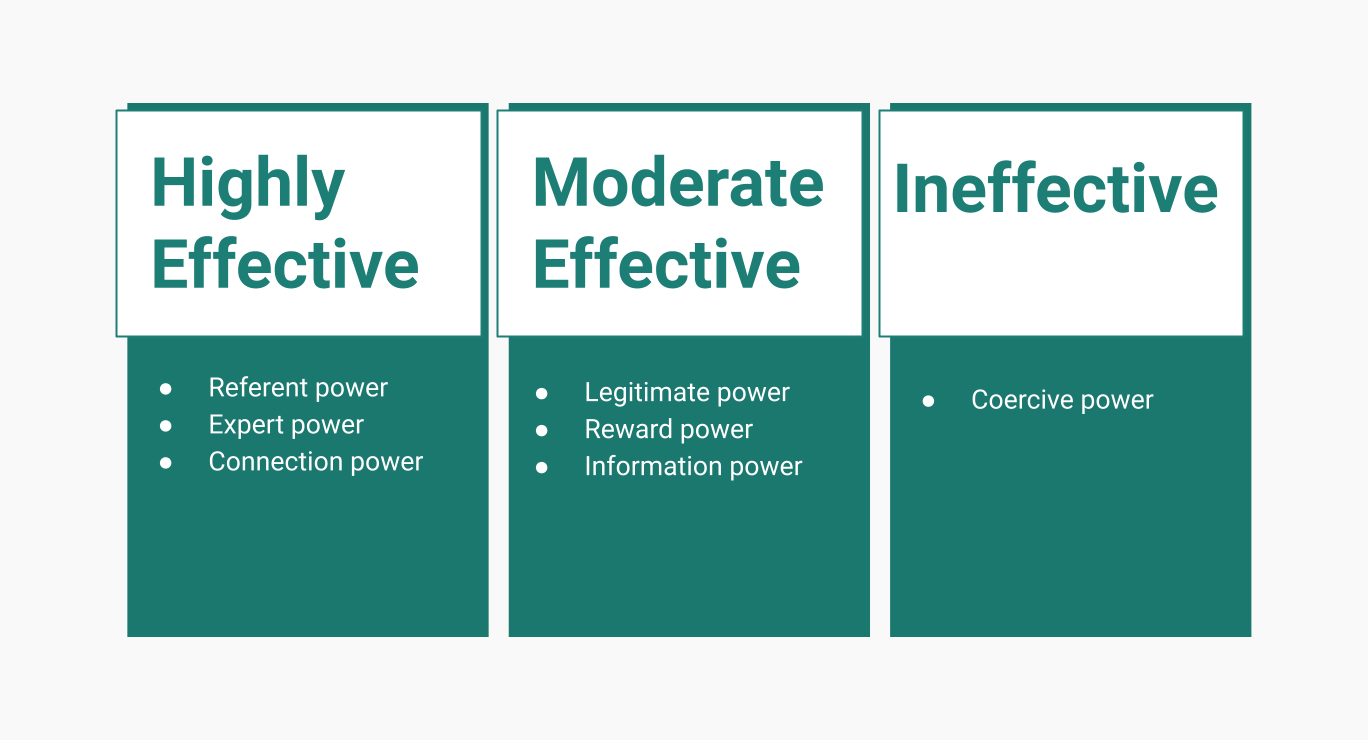Understanding McClelland’s Theory of Needs: A Practical Guide for Managers
5 Essential Types of Power for Successful Leadership
While power can be a tricky concept, when wielded wisely, it becomes a tool for building trust, driving progress, and achieving project goals. Let’s explore the five primary types of power in project management.
1. Formal Power: The Authority Granted by Position
Formal power is the authority that comes with your role as a project manager. It’s the power derived from your position within the organization. Formal power is necessary in every project, especially in organizations with a weak matrix structure, where clear lines of authority are crucial for decision-making.
When you have formal power, your team recognizes that you have the authority to make decisions, allocate resources, and set the direction for the project. However, relying solely on formal power can be limiting. It’s essential to complement it with other forms of power to build a well-rounded leadership models.

2. Reward Power: The Ability to Recognize and Incentivize
Reward power is all about your ability to provide something valuable to your team. It’s the power you hold because your team believes you can offer them rewards—whether that’s in the form of bonuses, promotions, recognition, or other incentives.
People are naturally motivated when they know there’s something in it for them. As a project manager, using reward power effectively means recognizing your team’s efforts and accomplishments, and ensuring that they feel appreciated. However, it’s important to use this power judiciously. Over-reliance on rewards can lead to a transactional relationship with your team, where they only perform for the sake of the reward rather than a genuine commitment to the project’s success.
3. Coercive Power: The Power to Penalize
Coercive power is the flip side of reward power. It’s the authority to impose penalties or consequences when someone doesn’t meet expectations or follow the rules. This could range from formal reprimands to loss of privileges or even termination.
While coercive power can be effective in ensuring compliance, it’s generally seen as the least desirable form of power. Overuse of coercive power can create a negative atmosphere, leading to fear, resentment, and decreased morale. However, in situations where discipline and adherence to protocols are critical, a measured use of coercive power might be necessary.
4. Expert Power: The Influence of Knowledge and Skills
Expert power is often considered the most valuable form of power in project management. It comes from your expertise, skills, and knowledge in a particular area. When your team sees you as a credible expert, they are more likely to respect your decisions and follow your lead.
Expert power is powerful because it’s based on trust and respect. Your team is motivated to work with you because they believe in your capabilities. To build and maintain expert power, it’s important to continuously develop your skills and stay informed about industry trends. Remember, expert power is earned, not given.
5. Referent Power: The Influence of Recommendations
Referent power is the influence you have because others have recommended or vouched for you. It’s the power of your reputation and the relationships you’ve built. This form of power is often more short-lived compared to the others, but it can be incredibly effective in certain situations, especially when you’re new to a project or team.
People are more likely to follow you if they know others they respect have spoken highly of you. However, referent power alone won’t sustain your leadership in the long term. It’s essential to combine it with other forms of power to build a lasting impact.
A Cinematic Example: The Best Type Of Power
A great example of a leader who skillfully combines all these forms of power is Captain Jack Aubrey in the film Master and Commander. Captain Aubrey demonstrates formal power as the ship’s captain, giving orders that must be followed. He uses reward power when he promises promotion and recognition to his men. His coercive power is evident when he enforces discipline to maintain order on the ship.
However, what truly sets him apart is his expert power—his deep knowledge of naval warfare earns him the respect of his crew. Finally, his referent power is seen in the loyalty he commands, not just from his crew, but from other officers who recommend and respect him.
Captain Aubrey’s ability to blend these forms of power effectively allows him to lead his crew through perilous situations, illustrating that the most successful leaders are those who know how to balance their power wisely.
Conclusion
In project management, power isn’t just about authority—it’s about influence, respect, and trust. Understanding the different types of power and knowing when to apply each one will help you lead more effectively. Whether you’re guiding your team through smooth waters or navigating the stormy seas of a complex project, remember that the best leaders are those who empower their teams through a balanced and thoughtful use of the right type of power.
About the Author
Sergey Koshevoy is the CEO of Planyway. With extensive experience in the field, Sergey is a recognized professional in project management, blending practical insights with strategic leadership. His expertise has helped countless teams streamline their workflows and achieve greater productivity.


